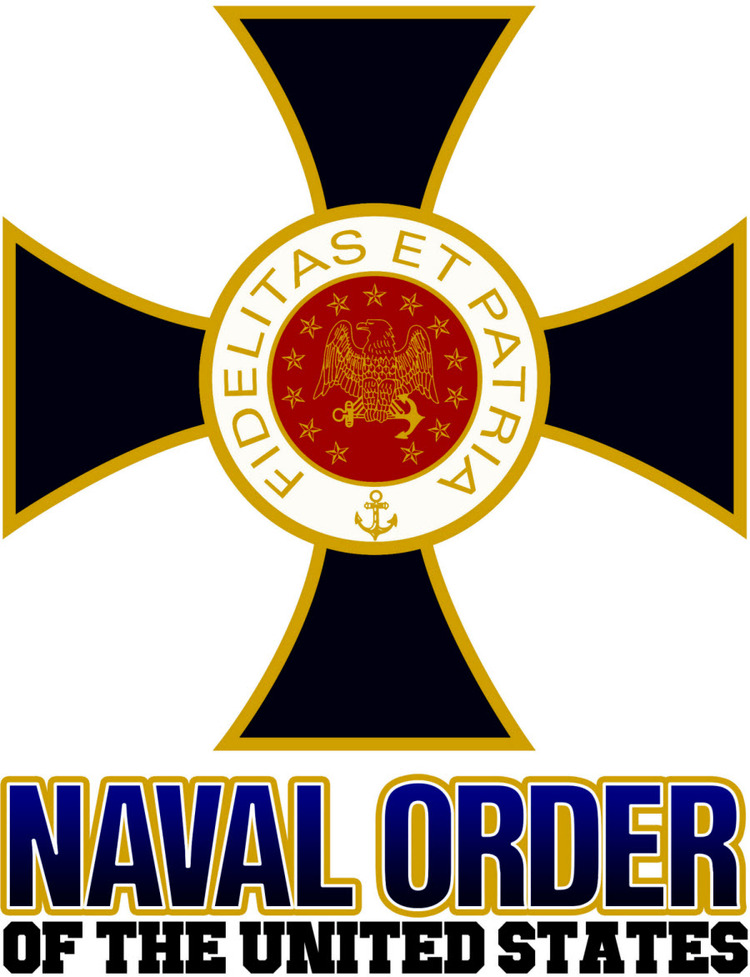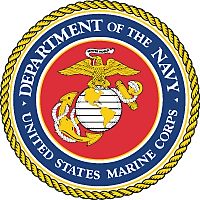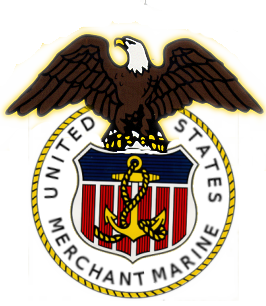
by Gilbert Beyer
This book is more of a scrapbook than it is a history. The idea for it came into being while sitting around over beers with a group of shipmates at a reunion of former Fiske sailors. The late Tom Clancy once wrote, "If it isn't written down it never happened." I started collecting these stories in 2010 and got the last one received into this edition. This is probably the last in the series. Too many of the people involved have passed, some never having told their stories. Today is a different world than it was after World War II and before 9/11 but we would do history an injustice if we failed to recognize its passing.
Email: ddr6063@gmail.com
Publisher: Independently published, 2024
Ordering Info: Amazon. See other works by this NOUS companion here.

by David F. Winkler
1942 would prove crucial for the United States in the Pacific following the Japanese attack on Pearl Harbor and a series of setbacks in the Southwest. As the first ship commissioned following America's entry into World War II, the light cruiser USS Atlanta would be thrust into the Pacific fight, joining the fleet in time for the pivotal battle of Midway and on to the Guadalcanal campaign in the Southwest Pacific. Embarked was an exceptionally astute observer, Lieutenant Commander Lloyd M. Mustin, who faithfully recorded his thoughts on the conflict in a standard canvas-covered logbook.
Diaries were not supposed to be kept by those serving in the U.S. Navy during World War II, and for good reason. If recovered by the Japanese, they would likely have revealed that the Japanese code had been broken prior to the battle of Midway. Thus, Mustin's diary is a rare day-to-day accounting of the Pacific from a very opinionated mid-grade officer. Beginning with the commissioning of Atlanta at the Brooklyn Navy Yard on Christmas Eve 1941, Mustin covers the ship's workups and her deployment to the Pacific in time for the battle of Midway.
It's then on to the Southwest Pacific, where the ship first engages enemy aircraft at the battle of the Eastern Solomons in late August 1942. Mustin's final entry covers the battle of Santa Cruz in late October 1942. The story is completed by an account of the battle of Guadalcanal and beyond, drawing upon Mustin's oral history. This is a valuable document, fully interpreted to provide a better understanding of the Pacific War during that critical year.
Email: winkler58@msn.com
Publisher: Casemate, 2024
Ordering Info: Casemate. See other works by this NOUS companion here.

by CDR Kenneth Breaux, USN (Ret.)
There are many books written about epic battles, heroic soldiers and the remarkable events that occur during a war. This book contains little of that history. This book is about the more than 70,000 men who remain missing after America's wars. Their names appear in our cemeteries, on gravestones marked "unknown," on commemorative walls listing the missing or simply in after-action reports inadequate to the task of declaring a life at an end. Americans are sensitive to the injustice and incompleteness of such records. So, the United States is the only country publicly committed to searching for missing warriors' remains and to identifying and finally honoring them. This commitment has been inconsistently fulfilled, however, and results have been mixed. This book shows how modern warfare loses its dead in ways that make them harder than ever to find after battle. It tells the story of families who never give up hope and of the volunteers and officials who try to help them. But it's also the story of how our government too often has failed to make finding the missing possible -- and what we can do about it. These are the ultimate cold cases.
Email: kenneth.breaux@sbcglobal.net
Published: 2022
Ordering Info: Amazon. See other works by this NOUS companion here.

by Dale A. Jenkins
Was the Japanese attack on Pearl Harbor inevitable?
It's November 1941. Japan and the US are teetering on a knife-edge as leaders on both sides of the Pacific strive to prevent war between them. But failed diplomacy, foiled negotiations, and possible duplicity in the Roosevelt administration thwart their attempts. Drawing on now-declassified original documents, Diplomats & Admirals reveals the inside story of one fateful year, including:
How the hidden agendas of powerful civilian and military leaders pushed the two nations toward war
The miscommunications, misjudgments, and blunders that doomed efforts at peace
China's role in the US ultimatum that triggered the attack on Pearl Harbor
Why the carrier-to-carrier showdown at Coral Sea proved a fatal mistake for Japan
How courageous US navy pilots snatched victory from defeat at the Battle of Midway
The defining events of WWII could have ended very differently. Combining perspectives from both military and civilian leaders, Diplomats & Admirals uncovers new insights into the Pacific naval battles that shaped the world—and the men behind them.
Email: dale.jenkins001@icloud.com
Publisher: Aubrey Publishing Co., 2022
Ordering Info: Amazon, Barnes & Noble
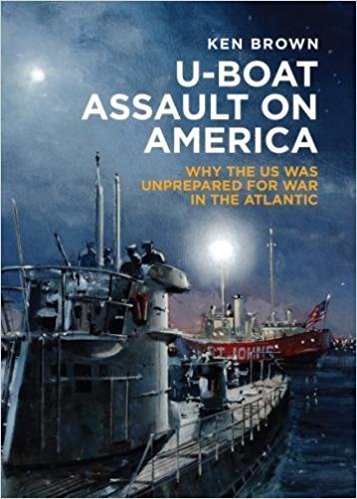
by Ken Brown
The "Second Happy Time" was the informal name given to the phase of the battle of the Atlantic when German U-boats attacked both merchant and U.S. naval vessels along America's east coast. With tankers burning and petrol rationing in New York City, the U.S. Navy seemed powerless to stop the deprivations of Hitler's marauding U-boats.
Ken Brown seeks to explain how the United States responded to these deadly assaults and looks at the steps that the Navy Department took to train the men, harness the scientists, and make the organizational changes that were required to defeat the German threat.
Email: thekenbrown@yahoo.com
Publisher: Naval Institute Press, 2017
Ordering Info: Amazon, Barnes & Noble

by William L. McGee
On 7 August 1942, eight months to the day after the Japanese attack on Pearl Harbor, the U.S. 1st Marine Division landed on the islands of Tulagi and Guadalcanal in the Solomon Islands. Thus was the beginning of the bloody and brutal six month Battle for Guadalcanal. For those who were there, Guadalcanal was not only a name, it was an emotion… recalling desperate fights in the air, furious naval battles during the night, frantic work at supply or construction, savage fighting in the sodden jungle, and nights broken by screaming bombs and deafening explosions of naval shells.
Under one cover, WWII military historian William L. McGee details all the campaigns fought in the Southern, Central and Northern Solomons—from Guadalcanal to Bougainville—and then summarizes the valuable lessons learned from these bloody battles.
“There is enough gripping drama, heroism, and heartbreak in McGee’s almost encyclopedic The Solomons Campaigns to supply Hollywood with material for a century.” –Marine Corps League Magazine
“A World War II navy veteran and prolific author, McGee has written the second of a three-volume set that will form a definitive account of naval, sea, and land operations in the South Pacific.” –Library Journal
William L. McGee's (1925–) writing career has spanned six decades. He has written 22 books, including five World War II military histories. Pacific Express: The Critical Role of Military Logistics in World War II is on the Marine Corps Commandant’s Professional Reading List as required reading on Logistics. For a complete list of books by the author, visit www.WilliamMcGeeBooks.com.
Email: mcgeebmc@aol.com
Publisher: BMC Publications, 2001
Ordering Info: Amazon
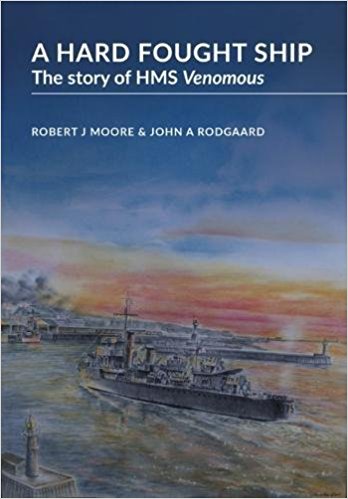
by John Rodgaard, Robert Moore
This is a ship biography of one of the 67 V & W Class destroyers built at the end of the Great War and scrapped at the end of World War II. After freezing in the forgotten war in the Baltic in 1919, Venomous spent the 1920s in the Mediterranean. She was in the front line when the German blitzkrieg swept across Europe and the V & Ws made high speed dashes across the Channel to bring troops (and civilians) back from Calais, Boulogne and Dunkirk.
Venomous and her sister ships escorted the Atlantic convoys which kept Britain fed and the Arctic convoys which supplied our Russian allies with the weapons to stop the German advance. She took part in Operation Pedestal which saved Malta and, as the allies prepared for the landings in North Africa, was ordered to escort the destroyer depot ship, HMS Hecla, to the invasion beaches. When Hecla was torpedoed off the coast of Morocco, Venomous fought the attacking U-Boat and rescued 500 survivors.
Venomous escorted convoys along the coast of north Africa including the first through convoy from Gibraltar to Alexandria and the invasion force to Sicily, Operation Husky. In October 1943 she returned to Britain and was converted to an Air Target ship for training Barracuda Torpedo Bomber aircrew based at Douglas in the Isle of Man. She was nearly lost in a hurricane off the east coast of Scotland before being sent to Kristiansand in Norway to accept the surrender of German naval forces.
This third revised edition contains dozens of photographs taken by the ship's company; most have never been seen before.
Author: john_rodgaard@yahoo.com
Publisher: Holywell House Publishing, UK, 2017
Ordering Info: Amazon, or directly from the author.

by James D. Hornfischer
The extraordinary story of the World War II air, land, and sea campaign that brought the U.S. Navy to the apex of its strength and marked the rise of the United States as a global superpower. Drawing on new primary sources and personal accounts by Americans and Japanese alike, here is a thrilling narrative of the climactic end stage of the Pacific War, focusing on the U.S. invasion of the Mariana Islands in June 1944 and the momentous events that it triggered. With its thunderous assault into Japan's inner defensive perimeter, America crossed the threshold of total war. From the seaborne invasion of Saipan to the stunning aerial battles of the Great Marianas Turkey Shoot, to the largest banzai attack of the war and the strategic bombing effort that led to Hiroshima and Nagasaki, the Marianas became the fulcrum of the drive to compel Tokyo to surrender with consequences that forever changed modern war.
James D. Hornfischer is the author of the New York Times bestsellers Neptune's Inferno, Ship of Ghosts, and The Last Stand of the Tin Can Sailors, winner of the Samuel Eliot Morison Award.
Email: jh@hornfischerlit.com
Publisher: Bantam, 2016
Ordering Info: Amazon, and can be ordered online at book website jameshornfischer.com
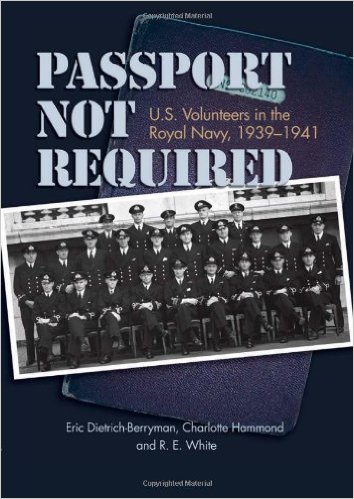
by Eric Dietrich-Berryman, Charlotte Hammond, R. E. White
This is the untold story of twenty-two U.S. citizens who came to fight for England by volunteering for the Royal Navy before America entered the war. They were commissioned between September 10, 1939 and November 10, 1941. Most of the men were sent for training to the Royal Naval College, Greenwich thus initiating what was to become the famous " over here" phenomenon as the two different cultures learnt to adapt to each other's ways. The faculty recognized the arrival of the first three men with a commemorative plaque placed in the floor of Painted Hall on June 15, 1941. Mindful of the possible legal consequences, since foreign military service is against U.S. law and can result in loss of citizenship, the names were omitted from the plaque. The search for their identity began over 30 years ago. Additional names were added as they became known, along with details of their lives and military service. What makes this tale compelling is that the men actually made a significant impact on the war effort. Showing up was just the start. Some achieved remarkable accomplishments. This is the story of who they were, what they did and why, and what become of them.
Email: berryman2@earthlink.net
Publisher: Naval Institute Press, Annapolis, 2010
Ordering Info: Amazon, Naval Institute Press, any bookstore chain branch

by Stephen Sussna
Defeat and Triumph tells the story of the still controversial, important, dramatic but little known Allied invasion of the French Riviera on August 15, 1944. This was known as Operation Anvil and later renamed Operation Dragoon. Notwithstanding the massive opposition of Winston Churchill, his military advisers, and many notable American Generals, Dragoon happened. After suffering four years of humiliating and devastating defeat, French men and women were assisted by their American and British Allies and this invasion ensured World War II victory in Europe. Defeat and Triumph: The Story of a Controversial Allied Invasion and French Rebirth thoroughly analyzes the pros and cons of Dragoon. The book provides a panoramic history of Operation Dragoon and related events in France, the United States, the Mediterranean, and Germany from 1940 to 1945. The author is in the unique position of having served on D Day of Dragoon as helmsman of LST 1012 (Landing Ship Tank). The LST 1012 participated in the most dangerous and tragic event of the invasion. Professor Sussna has gathered and analyzed a treasure trove of previously unpublished American, British, French, and German archival materials, diaries, letters, periodical articles, maps and interviews.
E-mail: stevesussna@cs.com
Publisher: XLIBRIS, 2008
Ordering Info: Amazon

by John J. Gobbell
With THE LAST LIEUTENANT and A CODE FOR TOMORROW, John J. Gobbell has firmly established himself as one of today's leading authors of epic war novels. His hero, Todd Ingram, has proven to be one of the most fascinating and endearing characters in the genre. In WHEN DUTY WHISPERS LOW, Lieutenant Commander Ingram faces his biggest challenge to date as his best friend turns against him when the chips are down. It's 1943 and the U.S. Navy is caught in a fierce battle against the Japanese in the South Pacific. At stake is the Allies newly won Guadalcanal in the Solomon Islands. But Isoroku Yamamoto, Admiral of the Combined Fleet and architect of the surprise attack on Pearl Harbor, desperately wants Guadalcanal back. Calling it “Operation I,” Yamamoto throws everything into the foray, scraping together top-line dive bombers and torpedo planes from all over the Pacific to carry out a series of Pearl-Harbor sized bombing raids in the Solomons. In response, the Allies introduce the proximity fuse to the fleet a top-secret anti-aircraft detonator that can greatly assist the U.S. Navy in their desperate fight against Japanese dive bombers and torpedo planes. However, in the heat of battle Commander Jerry Landa refuses to use the fuse - and pays the price as his ship, the USS Howell, is torn in half by Japanese “Val” dive bombers. Lieutenant Commander Todd Ingram confronts Landa, questioning his authority as the two become enemies in the midst of battle. As Ingram and Landa fight to survive “Operation I,” Yamamoto personally directs the raids that will return him to the glory of December 7, 1941 raids that will facilitate the recapture of Guadalcanal and that will cripple the United States Navy forever. Filled with epic battles, romance, and the brutality of war, John J. Gobbell has crafted a tale that will transport the reader into the South Pacific during World War II--a story as vibrant and stunning as anything he has ever written.
e-mail john@johnjgobbell.com
Publisher: St. Martin's Press, 2002 hardcover 2004 softcover (in print)
Ordering Info: Amazon, any major bookstore, Tin Can Sailors

by John J. Gobbell
Commander Todd Ingram stands on the bridge of his destroyer, U.S.S. Matthew (DD 525) when, suddenly, Japanese dive bombers plunge through the overcast. It’s a coordinated and devastating attack, the ship rocked by massive explosions. Concussions hurtle Ingram overboard, and helplessly, he watches his embattled ship stagger into the evening mist. He’s left behind as the Matthew’s crew desperately fights the fire and the Japanese. Ingram barely lasts the night, and early the next morning he whoops for joy as a periscope cuts a wake toward him through a glass-smooth sea. But joy turns to horror as the submarine surfaces. The submarine is the I-57 of the Imperial Japanese Navy. Her skipper is Commander Hajime Shimada, recipient of Japan’s highest honor: Order of the Golden Kite. Also aboard the I-57 is Korvettenkapitän Martin Taubman, of the Kreigsmarine. Until recently, Taubman was the naval attache’ in Tokyo. With Hajime and the I-57's crew of forty-nine officers and men, Taubman is enroute home via the U-Boat pens in Lorient, France. Ingram works hard for his keep and endures beatings from his captors. But he’s assured by Taubman, who becomes a chess-playing partner, to obey his captors, to keep his head down and work, that he'll be safely interred in a POW camp in Germany after they arrive in Lorient. It’s only until the I-57 makes a secret rendezvous with her sistership, the I-49, in Madagascar’s Antongila Bay, that Ingram learns this is not just a simple technical exchange mission between Germany and Japan. The I-57's mission has far more personal, and deadlier ramifications. Worst of all, Ingram discovers Hajime plans to get rid of him before they reach Lorient.
e-mail: john@johnjgobbell.com
Publisher: St. Martin's Press, 2004 hardcover
Ordering Info: Amazon, any major bookstore, Tin Can Sailors

by John J. Gobbell
In The Last Lieutenant, Navy Lieutenant Todd Ingram escaped the horrors of Corregidor. Now, in San Francisco, he agonizes over Helen Durand, the Army nurse he left behind, fighting for the resistance on Mindanao. Todd Ingram is befriended by Senior Lieutenant Eduard Dezhnev, the Soviet Naval attache’ to the USSR’s consulate there. But things go badly for the U.S. Navy in the South Pacific’s Solomon Islands and Rear Admiral Raymond Spruance orders Ingram to the destroyer U.S.S. Howell as executive officer. Right back in the fighting, Ingram is caught in two of the epic naval battles off Guadalcanal: the Battle of Cape Esperance and the Battle of the Santa Cruz Islands. Amidst this, Ingram reaches for Helen but her rescue is hampered by the espionage activities of Dezhnev, a man Ingram grew to trust and admire. With the war at its apex, Todd Ingram puts his life on the line not only for the girl he loves, but for his country, and for a world so perilously close to collapse.
email: john@johnjgobbell.com
Publisher: St. Martin's Press, 1999 hardcover 2002 in print
Ordering Info: Amazon, any major book store, Tin Can Sailors.

by Don Landauer
PEARL shows how the original natives came to Hawaii. Then it describes how European and American explorers and seamen came and affected Hawaiian culture. Then it documents how and why and when the United States Navy came, and subsequently how the two cultures related to each other. You Marines may be interested in the fact that the first ship (a captured British ship) into the Honolulu/Pearl Harbor area (in 1814)was commanded by a US Marine! Later the first US Marine detachment in 1906 deployed to the Honolulu area described Waikiki as a, " damned mosquito infested swamp" . The latest edition includes the Ehime Maru incident and the attack on New York and the Pentagon. The author was in the US Navy in 1945,6 and taught aboard 14 ships from 1990 to 1995 as a PACE instructor.
Email: Dontahoe@oakweb.com (summer) Donkauai@msn.com (winter)
Publisher: Flying Cloud Press, 1999, 3rd printing 2001
Ordering Info: Flying Cloud Press, Box 624002, S Lake Tahoe CA 96154 or USS Arizona Memorial, #1 USS Arizona Mem'l Place, Honolulu HI 96818. Price $21.95 + $2.50 S& H. Ten percent discount for USN & USMC veterans or Amazon

by Stan Piet & Captain Al Raithel, Jr, USN (Ret)
Martin P6M SeaMaster is the definitive history of the U.S. Navy's last seaplane project to see flight status. This book chronicles the three decades of the Glenn L. Martin Company's seaplane lineage that lead to the post WW II evolution of the High Speed Minelayer seaplane program. Covered are the technical hull achievements along with the politico/military forces that converged to spawn the revolutionary four-jet Marrtin P6M SeaMaster. Full discussion of its design competition, prototype development and crashes, pre-production and production variants along with the details of its weapons systems is featured. Also detailed are the proposed basing concepts and support equipment developments, follow-on designs, including the nuclear-engine proposals, and a complete review of its untimely demise and termination. The 70,000 word softcover volume features 236 pages in 81/2 x 11 landscape format with 12 pages of photos in full color. Over 375 photos and illustrations with 3-views and an inboard profile foldout complete this fascinating but bittersweet story of the end of the U.S. Navy's reliance on the naval flying boat.
Publisher: Martineer Press, 2001
Order Info: Amazon

by Bob Rositzke
Collection of stories about four major World War II naval campaigns and the Cold War. This video collection is part of a permanent display at the U.S. Naval Academy Museum. VHS 36:00.
Email: bobr@empirevideo.com
Publisher: Empire Video, Inc., 1998
Ordering Info: Call 703/866-1934. VISA/MC accepted. $15 (plus S& H)

by John J. Gobbell
The Japanese siege of Bataan and Corregidor during World War II was one of the worst defeats in U.S. military history. Over 130,000 GIs and Filipinos were slaughtered on this oft-forgotten Pacific front. And if it were not for naval intelligence’s success in breaking the JN-25, the Japanese Navy code, Midway Island would have fallen as well, leaving Hawaii and perhaps even the West Coast of the United States for the taking. THE LAST LIEUTENANT, an unforgettable World War II thriller on part EYE OF THE NEEDLE and one part FROM HERE TO ETERNITY, captures the heart and soul of those who fought to stop worldwide fascism. With the eye for detail of a military historian and the writing skills that have brought comparison to John Le Carré and James Jones, John J. Gobbell takes his place among today’s finest historical thriller writers. THE LAST LIEUTENANT is Todd Ingram. Half-starved and beyond exhaustion, Ingram refuses to give up the fight when General Jonathan Wainwright surrenders Corregidor to the Japanese. As artillery blasts The Rock’s beaches and hillsides, Ingram commandeers a thirty-six foot launch with eleven other desperate men. But only Ingram knows the most dangerous threat of all: that a Nazi spy named Walter Radtke lies undiscovered aboard the submarine U.S.S. Wolfish, the last evacuation submarine off the island. The Nazis knows about Chester Nimitz’s plan to trap the Japanese fleet at Midway and needs just thirty seconds and a radio to get a warning dispatch to Yamamoto. Ingram must track down the spy through miles of Japanese-infested waters and stop him before the tide of the war turns irrevocably to the rising sun. Before Ingram can save himself, Helen Duran, the Army nurse he loves, and his men, he must save his country. Radtke knows that the U.S. navy has cracked the Japanese code and that Commander in Chief Chester Nimitz is planning a trap for the Japanese fleet at Midway. All Radtke needs is a radio and thirty seconds.
email: john@johnjgobbell.com
Publisher: St. Martin's Press, 1995 Hardcover 1997
Ordering Info: Amazon

















by Gilbert Beyer
This book is more of a scrapbook than it is a history. The idea for it came into being while sitting around over beers with a group of shipmates at a reunion of former Fiske sailors. The late Tom Clancy once wrote, "If it isn't written down it never happened." I started collecting these stories in 2010 and got the last one received into this edition. This is probably the last in the series. Too many of the people involved have passed, some never having told their stories. Today is a different world than it was after World War II and before 9/11 but we would do history an injustice if we failed to recognize its passing.
Email: ddr6063@gmail.com
Publisher: Independently published, 2024
Ordering Info: Amazon. See other works by this NOUS companion here.
by David F. Winkler
1942 would prove crucial for the United States in the Pacific following the Japanese attack on Pearl Harbor and a series of setbacks in the Southwest. As the first ship commissioned following America's entry into World War II, the light cruiser USS Atlanta would be thrust into the Pacific fight, joining the fleet in time for the pivotal battle of Midway and on to the Guadalcanal campaign in the Southwest Pacific. Embarked was an exceptionally astute observer, Lieutenant Commander Lloyd M. Mustin, who faithfully recorded his thoughts on the conflict in a standard canvas-covered logbook.
Diaries were not supposed to be kept by those serving in the U.S. Navy during World War II, and for good reason. If recovered by the Japanese, they would likely have revealed that the Japanese code had been broken prior to the battle of Midway. Thus, Mustin's diary is a rare day-to-day accounting of the Pacific from a very opinionated mid-grade officer. Beginning with the commissioning of Atlanta at the Brooklyn Navy Yard on Christmas Eve 1941, Mustin covers the ship's workups and her deployment to the Pacific in time for the battle of Midway.
It's then on to the Southwest Pacific, where the ship first engages enemy aircraft at the battle of the Eastern Solomons in late August 1942. Mustin's final entry covers the battle of Santa Cruz in late October 1942. The story is completed by an account of the battle of Guadalcanal and beyond, drawing upon Mustin's oral history. This is a valuable document, fully interpreted to provide a better understanding of the Pacific War during that critical year.
Email: winkler58@msn.com
Publisher: Casemate, 2024
Ordering Info: Casemate. See other works by this NOUS companion here.
by CDR Kenneth Breaux, USN (Ret.)
There are many books written about epic battles, heroic soldiers and the remarkable events that occur during a war. This book contains little of that history. This book is about the more than 70,000 men who remain missing after America's wars. Their names appear in our cemeteries, on gravestones marked "unknown," on commemorative walls listing the missing or simply in after-action reports inadequate to the task of declaring a life at an end. Americans are sensitive to the injustice and incompleteness of such records. So, the United States is the only country publicly committed to searching for missing warriors' remains and to identifying and finally honoring them. This commitment has been inconsistently fulfilled, however, and results have been mixed. This book shows how modern warfare loses its dead in ways that make them harder than ever to find after battle. It tells the story of families who never give up hope and of the volunteers and officials who try to help them. But it's also the story of how our government too often has failed to make finding the missing possible -- and what we can do about it. These are the ultimate cold cases.
Email: kenneth.breaux@sbcglobal.net
Published: 2022
Ordering Info: Amazon. See other works by this NOUS companion here.
by Dale A. Jenkins
Was the Japanese attack on Pearl Harbor inevitable?
It's November 1941. Japan and the US are teetering on a knife-edge as leaders on both sides of the Pacific strive to prevent war between them. But failed diplomacy, foiled negotiations, and possible duplicity in the Roosevelt administration thwart their attempts. Drawing on now-declassified original documents, Diplomats & Admirals reveals the inside story of one fateful year, including:
How the hidden agendas of powerful civilian and military leaders pushed the two nations toward war
The miscommunications, misjudgments, and blunders that doomed efforts at peace
China's role in the US ultimatum that triggered the attack on Pearl Harbor
Why the carrier-to-carrier showdown at Coral Sea proved a fatal mistake for Japan
How courageous US navy pilots snatched victory from defeat at the Battle of Midway
The defining events of WWII could have ended very differently. Combining perspectives from both military and civilian leaders, Diplomats & Admirals uncovers new insights into the Pacific naval battles that shaped the world—and the men behind them.
Email: dale.jenkins001@icloud.com
Publisher: Aubrey Publishing Co., 2022
Ordering Info: Amazon, Barnes & Noble
by Ken Brown
The "Second Happy Time" was the informal name given to the phase of the battle of the Atlantic when German U-boats attacked both merchant and U.S. naval vessels along America's east coast. With tankers burning and petrol rationing in New York City, the U.S. Navy seemed powerless to stop the deprivations of Hitler's marauding U-boats.
Ken Brown seeks to explain how the United States responded to these deadly assaults and looks at the steps that the Navy Department took to train the men, harness the scientists, and make the organizational changes that were required to defeat the German threat.
Email: thekenbrown@yahoo.com
Publisher: Naval Institute Press, 2017
Ordering Info: Amazon, Barnes & Noble
by William L. McGee
On 7 August 1942, eight months to the day after the Japanese attack on Pearl Harbor, the U.S. 1st Marine Division landed on the islands of Tulagi and Guadalcanal in the Solomon Islands. Thus was the beginning of the bloody and brutal six month Battle for Guadalcanal. For those who were there, Guadalcanal was not only a name, it was an emotion… recalling desperate fights in the air, furious naval battles during the night, frantic work at supply or construction, savage fighting in the sodden jungle, and nights broken by screaming bombs and deafening explosions of naval shells.
Under one cover, WWII military historian William L. McGee details all the campaigns fought in the Southern, Central and Northern Solomons—from Guadalcanal to Bougainville—and then summarizes the valuable lessons learned from these bloody battles.
“There is enough gripping drama, heroism, and heartbreak in McGee’s almost encyclopedic The Solomons Campaigns to supply Hollywood with material for a century.” –Marine Corps League Magazine
“A World War II navy veteran and prolific author, McGee has written the second of a three-volume set that will form a definitive account of naval, sea, and land operations in the South Pacific.” –Library Journal
William L. McGee's (1925–) writing career has spanned six decades. He has written 22 books, including five World War II military histories. Pacific Express: The Critical Role of Military Logistics in World War II is on the Marine Corps Commandant’s Professional Reading List as required reading on Logistics. For a complete list of books by the author, visit www.WilliamMcGeeBooks.com.
Email: mcgeebmc@aol.com
Publisher: BMC Publications, 2001
Ordering Info: Amazon
by John Rodgaard, Robert Moore
This is a ship biography of one of the 67 V & W Class destroyers built at the end of the Great War and scrapped at the end of World War II. After freezing in the forgotten war in the Baltic in 1919, Venomous spent the 1920s in the Mediterranean. She was in the front line when the German blitzkrieg swept across Europe and the V & Ws made high speed dashes across the Channel to bring troops (and civilians) back from Calais, Boulogne and Dunkirk.
Venomous and her sister ships escorted the Atlantic convoys which kept Britain fed and the Arctic convoys which supplied our Russian allies with the weapons to stop the German advance. She took part in Operation Pedestal which saved Malta and, as the allies prepared for the landings in North Africa, was ordered to escort the destroyer depot ship, HMS Hecla, to the invasion beaches. When Hecla was torpedoed off the coast of Morocco, Venomous fought the attacking U-Boat and rescued 500 survivors.
Venomous escorted convoys along the coast of north Africa including the first through convoy from Gibraltar to Alexandria and the invasion force to Sicily, Operation Husky. In October 1943 she returned to Britain and was converted to an Air Target ship for training Barracuda Torpedo Bomber aircrew based at Douglas in the Isle of Man. She was nearly lost in a hurricane off the east coast of Scotland before being sent to Kristiansand in Norway to accept the surrender of German naval forces.
This third revised edition contains dozens of photographs taken by the ship's company; most have never been seen before.
Author: john_rodgaard@yahoo.com
Publisher: Holywell House Publishing, UK, 2017
Ordering Info: Amazon, or directly from the author.
by James D. Hornfischer
The extraordinary story of the World War II air, land, and sea campaign that brought the U.S. Navy to the apex of its strength and marked the rise of the United States as a global superpower. Drawing on new primary sources and personal accounts by Americans and Japanese alike, here is a thrilling narrative of the climactic end stage of the Pacific War, focusing on the U.S. invasion of the Mariana Islands in June 1944 and the momentous events that it triggered. With its thunderous assault into Japan's inner defensive perimeter, America crossed the threshold of total war. From the seaborne invasion of Saipan to the stunning aerial battles of the Great Marianas Turkey Shoot, to the largest banzai attack of the war and the strategic bombing effort that led to Hiroshima and Nagasaki, the Marianas became the fulcrum of the drive to compel Tokyo to surrender with consequences that forever changed modern war.
James D. Hornfischer is the author of the New York Times bestsellers Neptune's Inferno, Ship of Ghosts, and The Last Stand of the Tin Can Sailors, winner of the Samuel Eliot Morison Award.
Email: jh@hornfischerlit.com
Publisher: Bantam, 2016
Ordering Info: Amazon, and can be ordered online at book website jameshornfischer.com
by Eric Dietrich-Berryman, Charlotte Hammond, R. E. White
This is the untold story of twenty-two U.S. citizens who came to fight for England by volunteering for the Royal Navy before America entered the war. They were commissioned between September 10, 1939 and November 10, 1941. Most of the men were sent for training to the Royal Naval College, Greenwich thus initiating what was to become the famous " over here" phenomenon as the two different cultures learnt to adapt to each other's ways. The faculty recognized the arrival of the first three men with a commemorative plaque placed in the floor of Painted Hall on June 15, 1941. Mindful of the possible legal consequences, since foreign military service is against U.S. law and can result in loss of citizenship, the names were omitted from the plaque. The search for their identity began over 30 years ago. Additional names were added as they became known, along with details of their lives and military service. What makes this tale compelling is that the men actually made a significant impact on the war effort. Showing up was just the start. Some achieved remarkable accomplishments. This is the story of who they were, what they did and why, and what become of them.
Email: berryman2@earthlink.net
Publisher: Naval Institute Press, Annapolis, 2010
Ordering Info: Amazon, Naval Institute Press, any bookstore chain branch
by Stephen Sussna
Defeat and Triumph tells the story of the still controversial, important, dramatic but little known Allied invasion of the French Riviera on August 15, 1944. This was known as Operation Anvil and later renamed Operation Dragoon. Notwithstanding the massive opposition of Winston Churchill, his military advisers, and many notable American Generals, Dragoon happened. After suffering four years of humiliating and devastating defeat, French men and women were assisted by their American and British Allies and this invasion ensured World War II victory in Europe. Defeat and Triumph: The Story of a Controversial Allied Invasion and French Rebirth thoroughly analyzes the pros and cons of Dragoon. The book provides a panoramic history of Operation Dragoon and related events in France, the United States, the Mediterranean, and Germany from 1940 to 1945. The author is in the unique position of having served on D Day of Dragoon as helmsman of LST 1012 (Landing Ship Tank). The LST 1012 participated in the most dangerous and tragic event of the invasion. Professor Sussna has gathered and analyzed a treasure trove of previously unpublished American, British, French, and German archival materials, diaries, letters, periodical articles, maps and interviews.
E-mail: stevesussna@cs.com
Publisher: XLIBRIS, 2008
Ordering Info: Amazon
by John J. Gobbell
With THE LAST LIEUTENANT and A CODE FOR TOMORROW, John J. Gobbell has firmly established himself as one of today's leading authors of epic war novels. His hero, Todd Ingram, has proven to be one of the most fascinating and endearing characters in the genre. In WHEN DUTY WHISPERS LOW, Lieutenant Commander Ingram faces his biggest challenge to date as his best friend turns against him when the chips are down. It's 1943 and the U.S. Navy is caught in a fierce battle against the Japanese in the South Pacific. At stake is the Allies newly won Guadalcanal in the Solomon Islands. But Isoroku Yamamoto, Admiral of the Combined Fleet and architect of the surprise attack on Pearl Harbor, desperately wants Guadalcanal back. Calling it “Operation I,” Yamamoto throws everything into the foray, scraping together top-line dive bombers and torpedo planes from all over the Pacific to carry out a series of Pearl-Harbor sized bombing raids in the Solomons. In response, the Allies introduce the proximity fuse to the fleet a top-secret anti-aircraft detonator that can greatly assist the U.S. Navy in their desperate fight against Japanese dive bombers and torpedo planes. However, in the heat of battle Commander Jerry Landa refuses to use the fuse - and pays the price as his ship, the USS Howell, is torn in half by Japanese “Val” dive bombers. Lieutenant Commander Todd Ingram confronts Landa, questioning his authority as the two become enemies in the midst of battle. As Ingram and Landa fight to survive “Operation I,” Yamamoto personally directs the raids that will return him to the glory of December 7, 1941 raids that will facilitate the recapture of Guadalcanal and that will cripple the United States Navy forever. Filled with epic battles, romance, and the brutality of war, John J. Gobbell has crafted a tale that will transport the reader into the South Pacific during World War II--a story as vibrant and stunning as anything he has ever written.
e-mail john@johnjgobbell.com
Publisher: St. Martin's Press, 2002 hardcover 2004 softcover (in print)
Ordering Info: Amazon, any major bookstore, Tin Can Sailors
by John J. Gobbell
Commander Todd Ingram stands on the bridge of his destroyer, U.S.S. Matthew (DD 525) when, suddenly, Japanese dive bombers plunge through the overcast. It’s a coordinated and devastating attack, the ship rocked by massive explosions. Concussions hurtle Ingram overboard, and helplessly, he watches his embattled ship stagger into the evening mist. He’s left behind as the Matthew’s crew desperately fights the fire and the Japanese. Ingram barely lasts the night, and early the next morning he whoops for joy as a periscope cuts a wake toward him through a glass-smooth sea. But joy turns to horror as the submarine surfaces. The submarine is the I-57 of the Imperial Japanese Navy. Her skipper is Commander Hajime Shimada, recipient of Japan’s highest honor: Order of the Golden Kite. Also aboard the I-57 is Korvettenkapitän Martin Taubman, of the Kreigsmarine. Until recently, Taubman was the naval attache’ in Tokyo. With Hajime and the I-57's crew of forty-nine officers and men, Taubman is enroute home via the U-Boat pens in Lorient, France. Ingram works hard for his keep and endures beatings from his captors. But he’s assured by Taubman, who becomes a chess-playing partner, to obey his captors, to keep his head down and work, that he'll be safely interred in a POW camp in Germany after they arrive in Lorient. It’s only until the I-57 makes a secret rendezvous with her sistership, the I-49, in Madagascar’s Antongila Bay, that Ingram learns this is not just a simple technical exchange mission between Germany and Japan. The I-57's mission has far more personal, and deadlier ramifications. Worst of all, Ingram discovers Hajime plans to get rid of him before they reach Lorient.
e-mail: john@johnjgobbell.com
Publisher: St. Martin's Press, 2004 hardcover
Ordering Info: Amazon, any major bookstore, Tin Can Sailors
by John J. Gobbell
In The Last Lieutenant, Navy Lieutenant Todd Ingram escaped the horrors of Corregidor. Now, in San Francisco, he agonizes over Helen Durand, the Army nurse he left behind, fighting for the resistance on Mindanao. Todd Ingram is befriended by Senior Lieutenant Eduard Dezhnev, the Soviet Naval attache’ to the USSR’s consulate there. But things go badly for the U.S. Navy in the South Pacific’s Solomon Islands and Rear Admiral Raymond Spruance orders Ingram to the destroyer U.S.S. Howell as executive officer. Right back in the fighting, Ingram is caught in two of the epic naval battles off Guadalcanal: the Battle of Cape Esperance and the Battle of the Santa Cruz Islands. Amidst this, Ingram reaches for Helen but her rescue is hampered by the espionage activities of Dezhnev, a man Ingram grew to trust and admire. With the war at its apex, Todd Ingram puts his life on the line not only for the girl he loves, but for his country, and for a world so perilously close to collapse.
email: john@johnjgobbell.com
Publisher: St. Martin's Press, 1999 hardcover 2002 in print
Ordering Info: Amazon, any major book store, Tin Can Sailors.
by Don Landauer
PEARL shows how the original natives came to Hawaii. Then it describes how European and American explorers and seamen came and affected Hawaiian culture. Then it documents how and why and when the United States Navy came, and subsequently how the two cultures related to each other. You Marines may be interested in the fact that the first ship (a captured British ship) into the Honolulu/Pearl Harbor area (in 1814)was commanded by a US Marine! Later the first US Marine detachment in 1906 deployed to the Honolulu area described Waikiki as a, " damned mosquito infested swamp" . The latest edition includes the Ehime Maru incident and the attack on New York and the Pentagon. The author was in the US Navy in 1945,6 and taught aboard 14 ships from 1990 to 1995 as a PACE instructor.
Email: Dontahoe@oakweb.com (summer) Donkauai@msn.com (winter)
Publisher: Flying Cloud Press, 1999, 3rd printing 2001
Ordering Info: Flying Cloud Press, Box 624002, S Lake Tahoe CA 96154 or USS Arizona Memorial, #1 USS Arizona Mem'l Place, Honolulu HI 96818. Price $21.95 + $2.50 S& H. Ten percent discount for USN & USMC veterans or Amazon
by Stan Piet & Captain Al Raithel, Jr, USN (Ret)
Martin P6M SeaMaster is the definitive history of the U.S. Navy's last seaplane project to see flight status. This book chronicles the three decades of the Glenn L. Martin Company's seaplane lineage that lead to the post WW II evolution of the High Speed Minelayer seaplane program. Covered are the technical hull achievements along with the politico/military forces that converged to spawn the revolutionary four-jet Marrtin P6M SeaMaster. Full discussion of its design competition, prototype development and crashes, pre-production and production variants along with the details of its weapons systems is featured. Also detailed are the proposed basing concepts and support equipment developments, follow-on designs, including the nuclear-engine proposals, and a complete review of its untimely demise and termination. The 70,000 word softcover volume features 236 pages in 81/2 x 11 landscape format with 12 pages of photos in full color. Over 375 photos and illustrations with 3-views and an inboard profile foldout complete this fascinating but bittersweet story of the end of the U.S. Navy's reliance on the naval flying boat.
Publisher: Martineer Press, 2001
Order Info: Amazon
by Bob Rositzke
Collection of stories about four major World War II naval campaigns and the Cold War. This video collection is part of a permanent display at the U.S. Naval Academy Museum. VHS 36:00.
Email: bobr@empirevideo.com
Publisher: Empire Video, Inc., 1998
Ordering Info: Call 703/866-1934. VISA/MC accepted. $15 (plus S& H)
by John J. Gobbell
The Japanese siege of Bataan and Corregidor during World War II was one of the worst defeats in U.S. military history. Over 130,000 GIs and Filipinos were slaughtered on this oft-forgotten Pacific front. And if it were not for naval intelligence’s success in breaking the JN-25, the Japanese Navy code, Midway Island would have fallen as well, leaving Hawaii and perhaps even the West Coast of the United States for the taking. THE LAST LIEUTENANT, an unforgettable World War II thriller on part EYE OF THE NEEDLE and one part FROM HERE TO ETERNITY, captures the heart and soul of those who fought to stop worldwide fascism. With the eye for detail of a military historian and the writing skills that have brought comparison to John Le Carré and James Jones, John J. Gobbell takes his place among today’s finest historical thriller writers. THE LAST LIEUTENANT is Todd Ingram. Half-starved and beyond exhaustion, Ingram refuses to give up the fight when General Jonathan Wainwright surrenders Corregidor to the Japanese. As artillery blasts The Rock’s beaches and hillsides, Ingram commandeers a thirty-six foot launch with eleven other desperate men. But only Ingram knows the most dangerous threat of all: that a Nazi spy named Walter Radtke lies undiscovered aboard the submarine U.S.S. Wolfish, the last evacuation submarine off the island. The Nazis knows about Chester Nimitz’s plan to trap the Japanese fleet at Midway and needs just thirty seconds and a radio to get a warning dispatch to Yamamoto. Ingram must track down the spy through miles of Japanese-infested waters and stop him before the tide of the war turns irrevocably to the rising sun. Before Ingram can save himself, Helen Duran, the Army nurse he loves, and his men, he must save his country. Radtke knows that the U.S. navy has cracked the Japanese code and that Commander in Chief Chester Nimitz is planning a trap for the Japanese fleet at Midway. All Radtke needs is a radio and thirty seconds.
email: john@johnjgobbell.com
Publisher: St. Martin's Press, 1995 Hardcover 1997
Ordering Info: Amazon
